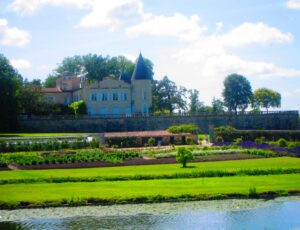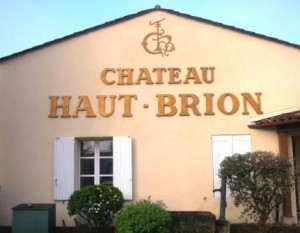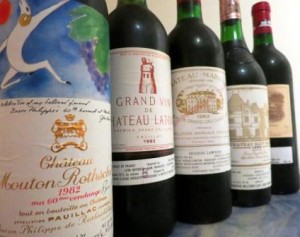
The First Growth Bordeaux wines are among the world’s most expensive and famous wines. The 1st Growths of Bordeaux are now, more than ever, in a class by themselves. Currently, even the newest vintages being sold as futures cost on average $1,000 or more per bottle!
How did Chateau Lafite Rothschild, Chateau Latour, Chateau Margaux, Chateau Haut Brion and Chateau Mouton Rothschild earn their coveted First Growth status? This article is a complete guide to the First Growth wines, wineries and chateau of Bordeaux.
What we known of as the First Growth Bordeaux wines today, all share a long, colorful and sometimes connected history. The First Growths share histories dating back hundreds of years.
In fact, for the majority of the 18th century, two families owned Lafite, Latour, Margaux and Haut Brion.
Even more amazing is, during a 2 year period, the same 2 families added Mouton to their holdings from 1718 to 1720. In other words, for a short period of time, all 5 First Growths were owned by just two families!
Each of the properties were famous all over the world for their Bordeaux wine, long before they were classified as First Growth Bordeaux producers. The wines were known to be extraordinary in quality and it was agreed by most people at the time, that they occupied perhaps the finest terroir and soil in Bordeaux,
The wines were the most expensive in the Bordeaux wine region. In large part, that is what made them First Growth Bordeaux wines, or the wine buyers of the day were well aware of their quality and value.
In unofficial classifications, Lafite Rothschild, Latour, Margaux and Haut Brion were listed as the finest and most costly wines of Bordeaux.
They were thought of as First Growth Bordeaux wine, decades before the term became widely used. Thomas Jefferson during his visit to Bordeaux in 1787 came up with his list of the best wines from the area as well.
The list created by Thomas Jefferson also placed the First Growth Bordeaux wine producers at the top of his rankings.
According to Thomas Jefferson, “There are four vineyards of prime quality:
1. Chateau Margaux, belonging to the Marquis d’Argicourt, who produces around 150 barrels that were sold by contract to a merchant named Jernon.
2. La Tour Segur, (Chateau Latour ) in Saint-Lambert, belonging to Mister de Miromesnil, who produces 125 barrels.
3. Haut-Brion, two-thirds of which belong to the Count de Fumel who sold the harvest to a merchant called Barton. The other third belongs to the Count of Toulouse; in all, the château produces 75 barrels.
4. Chateau de la Fite, (Chateau Lafite Rothschild) belonging to President Pichard of Bordeaux, which produces 175 barrels”.
Some of the other famous tasters of the day put together unofficial ranks of Bordeaux wines after Jefferson were: Andre Simon in 1800, Lawton of Tastet and Lawton in 1815, Wilhelm Franck in 1845 and most notably, Cocks and Feret in 1850.
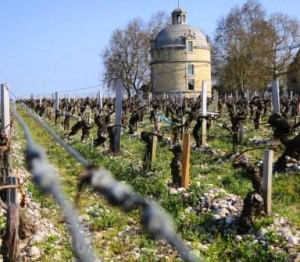
Latour
The official Classification took place at The Exposition Universelle de Paris. The event was seen as the perfect opportunity for France to display the best it had to offer for the entire world to see. This was what Napoléon III wanted to accomplish in 1855 with French culture and of course, the wines of France and Bordeaux..
What happened next was, the Gironde Chamber of Commerce ordered an official classification to accompany the now famous wines of the Bordeaux appellation. They allowed the Wine Brokers’ Union of Bordeaux to develop the plan.
Their efforts morphed into what we now refer to as the official 1855 Classification.
The wines included in the Classification were all from Medoc, except for the already legendary Château Haut-Brion from Graves, which had to be included due to its world wide fame.
To create the list, Emperor Napoleon requested the top Bordeaux negociants of the day to rank the best wines of Bordeaux in five different ranking categories. The ranking categories were called Growths. A wine with the ranking of First Growth was considered the best wine in Bordeaux.
While the rankings were in theory about quality, the selling price factored heavily into which wines were ranked into their respective categories and of course, the most expensive wines were The First Growth Bordeaux Wines.
Another way to look at this is, a First Growth is an A+, a Second Growth is an A-, a Third Growth is a B+, a Fourth Growth is a B and a Fifth Growth is a C+.
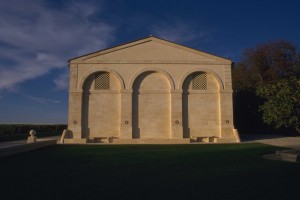
Mouton Rothschild
With the exception of an A+ for the First Growths, the grades may or may not be applicable. But they provide you with a good idea on what the term First Growth means in relationship to the other Classified Growths of Bordeaux.
The First Growth Bordeaux producers are all located in the Left Bank. Three First Growth chateau reside in Pauillac. One is in Margaux and the other property is situated in Graves/Pessac Leognan .
Few changes have taken place to the now historical ranking. The most important change occurred in 1973 when Mouton Rothschild was elevated from Second Growth to the status of a First Growth. To view detailed histories, profiles,images, tasting notes and comments of the First Growth Bordeaux Wine producers, click on any of the following links.
First Growths (Premiers Crus) Commune
Château Lafite-Rothschild (Pauillac)
Château Latour (Pauillac)
Château Margaux (Margaux)
Château Haut-Brion Pessac Leognan (Graves)
Château Mouton Rothschild(Pauillac)
In total, for the official 1855 Classification of the Medoc, they came up with 5 levels of classification which covered 61 different chateaux in all.
Following on the heels of the First Growths, the remaining levels of classification are: Second Growth, Third Growth, Fourth Growth and Fifth Growth.
It should be noted that even the First Growths have all gone through bad patches. Most of the time, it was because they were underfunded and were not able to maintain their vineyards and, or cellars. However, that has not been the case since the 1982 vintage.
Following the legendary 1961 vintage, most of the First Growth chateaux turned in sub-par wines that were not equal to their terroir or lofty status. Today, that is not case.
In a vintage that allowed the grapes to ripen in the Medoc, the First Growths more often than not produce the best wines in their appellation.
Going back to the original classification of the Medoc, it’s also important to keep in mind that along with the 1855 classification of the red wines of Bordeaux, the wines from the commune of Sauternes and Barsac were also rated.
Only one wine earned the coveted status of Premier Cru Superieur, First Growth, Chateau d’Yquem. While many tasters, critics, consumers and wine makers can spend hours debating which is the best First Growth producer in the Medoc, there is no argument about Chateau d’Yquem.
In fact, Chateau d’Yquem is the only Bordeaux wine without peer. In fact, many people have the opinion that Chateau d’Yquem is the best wine of all the First Growths!
Chateau d’Yquem has been held in this high regard for hundreds of years. When Thomas Jefferson visited Bordeaux, he wrote in his diary that d’Yquem “is the best white wine of France”.
In St. Emilion, with their ever changing Classification, in the official, 2012 St. Emilion Classification, Chateau Ausone and Chateau Cheval Blanc were no longer the only two Primeur Cru Classe A Chateau. Chateau Angelus and Chateau Pavie joined the exclusive club.
All 4 chateaux are now as Premieur Cru Classe A. Guide to Premier Cru Classe A St. Emilion Chateaux
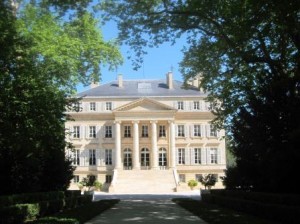
Margaux
There are two other casual terms for the First Growths used in Bordeaux. “The Big 8”, which includes all the wines classified in 1855, red and white, plus the Cheval Blanc and Ausone from St. Emilion. There is also “The Club of 9” which counts the members of “The Big 8” and Petrus from Pomerol.
“The Club of 9” meets at least once a year to taste and share their wines from every new vintage. While the club of 9 still exists and tastes together, in theory, with the new 2012 Saint Emilion Classification, the club of 9 should be renamed the club of 11.
That has not happened yet and from the look of things today, that is not likely to take place at any time in the near future. Things move slowly in Bordeaux, as you might expect, in an appellation where the wines can often take decades to develop.

